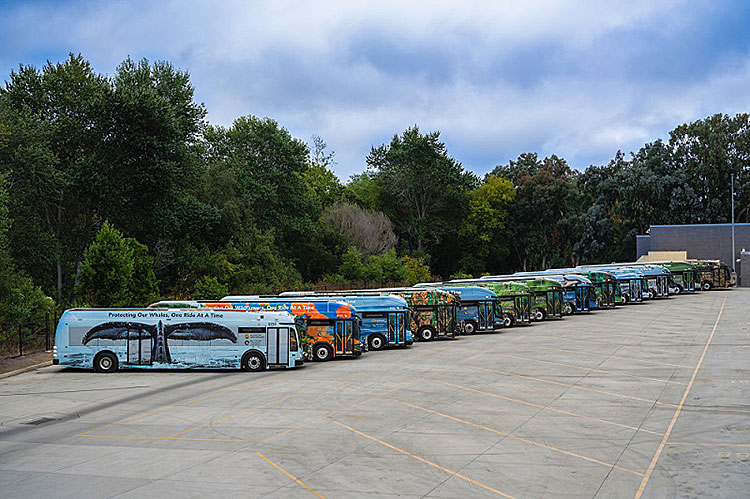By Jondi Gumz
Leaders of Santa Cruz Metro are laying the groundwork to ask Santa Cruz County voters next year to fund a sales tax to reimagine the countywide service, replacing diesel buses with hydrogen-powered fuel cell electric buses and improving service, more frequent buses based on demand, shorter wait times and more direct routes.
- Buses every 15 minutes on three corridors in Soquel, Capitola, and Live Oak.
- A frequent ride from Cabrillo College in Aptos or Capitola Mall all the way to UC Santa Cruz.
- A new frequent route from Watsonville to Cabrillo College via Freedom Boulevard and Airport Blvd.
The revamp comes under the new CEO/General Manager Michael Tree, who came on board in April 2022 after leading the Livermore Amador Valley Transit Authority to national recognition in 2000.
Santa Cruz Metro has committed to buy 57 zero-emission hydrogen fuel cell buses, which reduce carbon dioxide emissions, from New Flyer, based in Winnipeg, Canada.
Those vehicles are pricey, $1.4 million for 40-foot bus and $2 million for 60-foot bus, before taxes.
Metro staff expect a production run of 100 buses will reduce the price to $850,000 per bus. Industry’s 2029 target is $600,000 per bus.
The purchase was possible, in part, through a $20.4 million grant from the Federal Transit Administration and $38.6 million from the California State Transportation Agency.
Santa Cruz Metro has applied for $27 million from the California Air Resources Board’s Volkswagen Environmental Mitigation Trust.
Metro already has 10 hydrogen buses, and the latest commitment brings the fleet to 69% hydrogen, leaving 31% yet to convert.
However, that figure could change as Metro would need more buses to expand services under the “Reimagine” plan.
Staffing remains a challenge. Santa Cruz Metro needs more bus drivers and is offering a $4,000 bonus. In their first year, drivers make nearly $100,000 in wages and benefits.
Voters approved a .5% sales tax in 1978 for Santa Cruz in 1978, which provides 39% of operations revenues. Fares provide 20%, state and federal grants 22%, advertising 1%, with 8% for capital projects and 10% in reserves.
Finances have been in crisis since 2015, and ridership is recovering slowly from the pandemic. Most riders tend to be students or elderly; 65% of riders earn less than $24,000 and 60% don’t have a car.
Metro says existing funding is not enough to revamp operations and meet the goal to boost ridership from 3.5 million to 7 million in the next five years, reduce personal vehicles on the roads, and provide sustainable transportation.
Up until Sept. 30, Santa Cruz Metro was not legally eligible to ask for another county sales tax because cumulative sales tax increases are capped at 2% and Scotts Valley and Watsonville are already at 2%. Resident in those cities pay 9.75% sales tax while those in the unincorporated areas pay 9%.
Senate Bill 862, introduced by Sen. John Laird, D-Santa Cruz, and signed Sept. 30 by Gov Gavin Newsom, creates an exception that allows Santa Cruz Metro to ask for a sales tax.
The maximum allowable is a .5% sales tax, according to Laird’s office.
Both Metro board chair Shebreh Kalantari-Johnson and vice chair Kristen Brown thanked Laird for his efforts.
The next scheduled election is March 5.
For a sales tax to be on that ballot, the deadline to file is Dec. 8.
During the next 45 days, Metro staff will be talking to the board about options.
•••
For info and outreach, see https://scmtd.com/en/agency-info/planning/reimagine-metro and www.scmtd.com/en/
Top Photo Credit: Santa Cruz Metro

